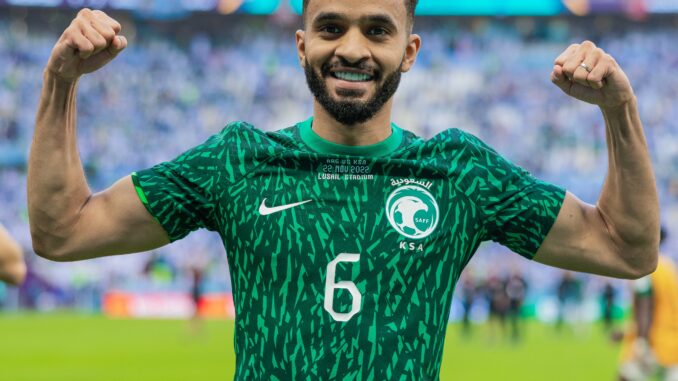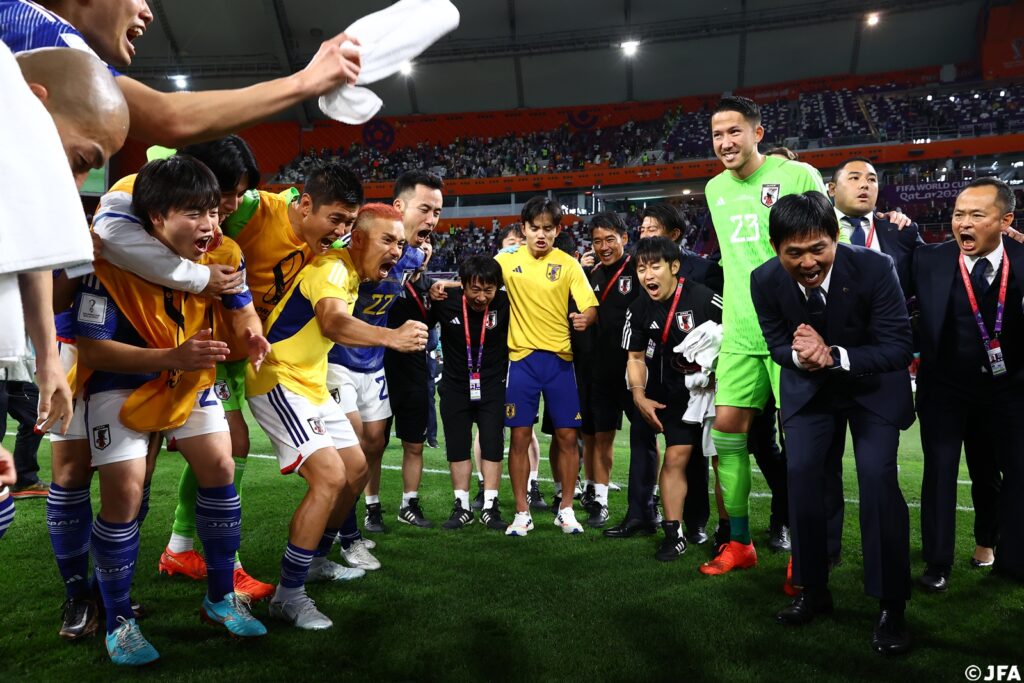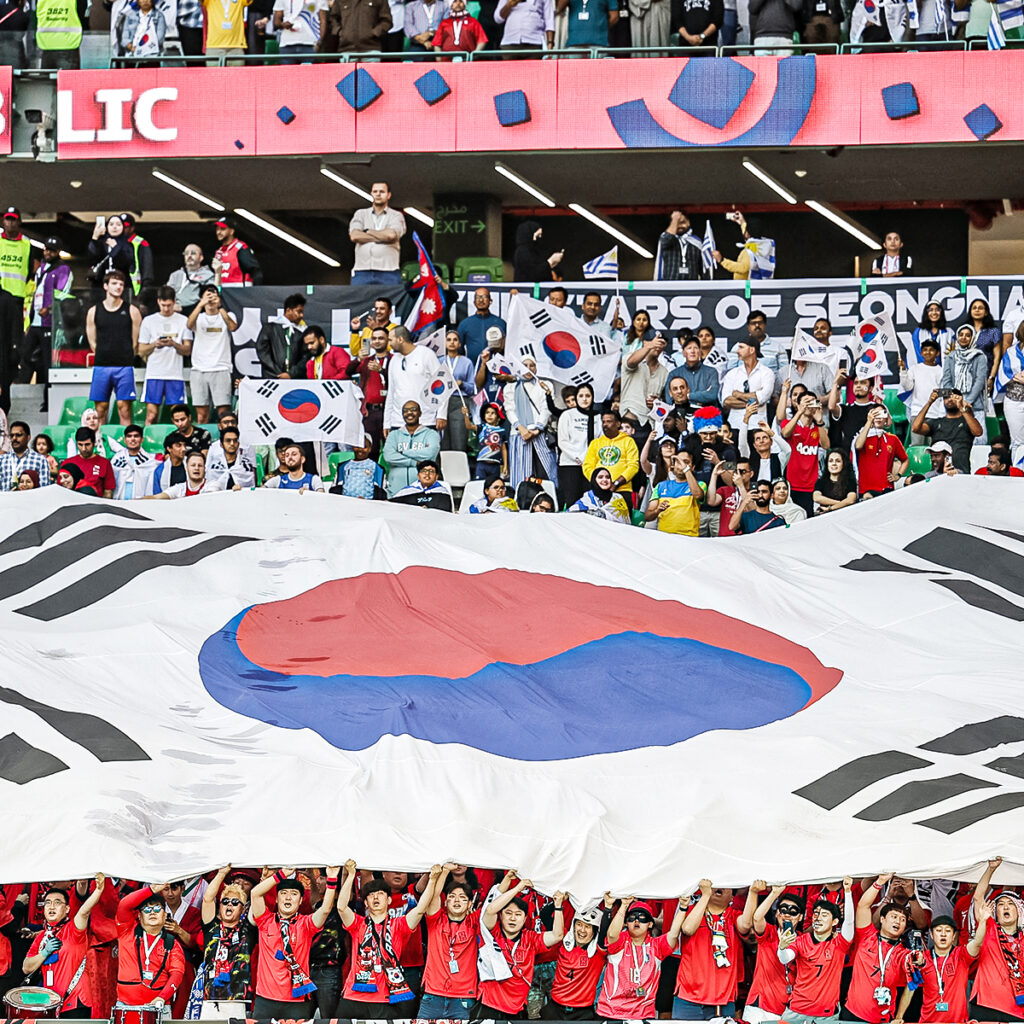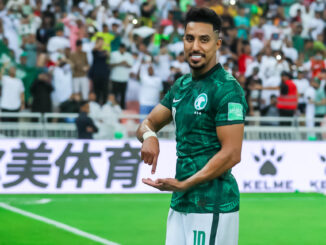

The Asian Game’s coverage of the FIFA World Cup Qatar 2022 is proudly sponsored by SMC.
A week is a long time in football, even longer during a World Cup.
From the derailing start courtesy of Qatari and Iranian collapses, to the dizzying highs in monumental upsets engineered by Saudi Arabia and Japan, the reputation of Asian football has swayed one way then another; from some questioning Asia’s place at the World Cup, to ending the week proposing a potential new dawn for world football.
As we argued at the beginning of the week, no individual performance could be endemic of where Asian football currently is, we’ll refrain from doing the opposite despite the positive mood we end it with.
Indeed, we have two more matchdays to play, and as always, only the knockout stage will truly determine how Qatar 2022 will be looked back upon through an Asian lens.
Improved technical quality is shining through
It’s difficult to refute that Asian football has progressed over the last decade, and that is coming through in Qatar.
A greater proportion of Asian football talent has flooded into Europe, greater structures are being installed at home and an understanding of a modern philosophy that can get the very best out of the burgeoning talent base has slowly materialised.
It’s one thing having the potential, but another thing entirely demonstrating it on the world stage. The Japanese Football Association’s 100-year plan, for example, is often praised for its long-term vision in improving the country’s footballing prospects.
But while early milestones relating to World Cup qualification and league structure reform feel tangibly achievable, the later goals such as their current “top 10 in the world” and future “World Cup champions by 2050” are a little less formulaic given the unpredictability of football.
Such unpredictability has been seen regularly in the last week; emotional impacts, such as the background distraction of the Iranian protests, external pressures, as was so visibly felt by hosts Qatar in the opening game, or indeed the tactical approach taken by the existing coach. It doesn’t necessarily matter what depths in quality are available to a nation, in that moment, external factors tend to become more important than mere talent alone.
In the last week, a retreat to a typical Asian football mentality has led to more failure than success. From Carlos Queiroz’s misjudged defensive approach against England, to Graham Arnold’s reactionary retreat against France, playing like a nation, or continent that is second best, is often going to provide a predictable result.
With World Cup rankings structured as they are, the days of Asia occupying the bottom seed spots are likely to stretch into 2026 and beyond, unless progress is made at the tournaments themselves.
As we approached a first round slate of matches against Argentina, France, Germany, England and Uruguay, very few expected Asia to compete let alone achieve results against their European and South American superiors. It takes brave decisions to break through the expectations and make an impact.
Brave coaching decisions provide success
Herve Renard’s risk hungry, but ultimately positive approach against Argentina encapsulated what is required of Asian football to move forward. Riding their luck at times was inevitable against such a well-established and experienced opponent; an approach that could have very easily seen his Saudi side run out of the match by half-time.

But after riding out the storm, the Green Falcons were able to establish a foot hold in the game and illustrate their worth; commanding possession and taking risks, to not only compete but succeed against a flat-footed and complacent Argentine defence.
Embracing risk is what modern football has become; something Asian football has tended to lag behind in despite their pursuit to keep tabs with the coat-tails of the European innovators. Merely hanging on has almost been seen as the best that Asia can achieve over the last two decades, with little appetite to adapt and threaten based on openings or the squad options available to you.
Heading into the tournament, under a cloud of scepticism of whether he could truly offer such flexibility, Hajime Moriyasu ends the week surprisingly as one of the key protagonists behind such a successful start for Asian football.
Whether it was chaotic genius, or mere fortune of the brave, Moriyasu’s second-half switch, from parking the bus and hitting on the counter, to a well-adapted positive approach that struck at the heart of their opponent’s weaknesses proved inspired.
As Takehiro Tomiyasu emerged as a second half substitute for Takefusa Kubo, which prompted the formation and mentality shift, western TV commentators even remarked their surprise that Moriyasu would even consider a switch at this stage; “Japan were doing alright” it was said – if alright means being 1-0 down, and broadly hanging on to the game by their fingernails.
That single switch shows the maturity of Moriyasu and Asian football to embrace the challenge and not settle for being turned over; something that has rarely been seen in World Cups previous. While there have been brief examples of this – Ange Postecoglou’s 2014 Australian team, Juan Antonio Pizzi’s 2018 Saudi team – finally, the continent has the individual quality to match the ambition of their coaches.
That meeting of coaching optimism and player quality was evident in South Korea’s opener also. Far from the open, enthralling encounters we witnessed earlier in the week, it was an upturn in expectation for Korea heading into it off the back of three miserable World Cup campaigns.
Well used to their role as underdogs, to head into and compete as equals against a World Cup heavyweight such as Uruguay, illustrated how far their nation’s football has progressed in such a short time.

Conservatism continues to hold back the rest
It’s a shame then that this wasn’t reflected across the board. Qatar were stunned by nerves and pressure according to coach Felix Sanchez, yet set up without a clear game plan of how they were going to succeed against an impressive yet not flawless Ecuador side.
Iran, maybe all too predictably, reverted to type; sitting deep in distant hope of that they could keep the score down against England, stubbornly ignoring what attacking talents have been developed in the country over the last four years.
Carlos Queiroz’s man and game management has long been eulogised, yet he now needs to prove he can provide the next level of results with a squad of players who have grown in quality since his previous stint.
While Australia, despite a positive start, retreated at their first setback, going on to capitulate against France; a match that was there for the attacking.
Despite being one of the only Asian teams who isn’t at their peak heading into Qatar, with the likes of Awer Mabil, Craig Goodwin and Garang Kuol, Graham Arnold has little to stand against, in suggesting they couldn’t keep up their high intensity throughout the encounter.
As we move through the tournament, yet more bravery is needed from each coach, as the promised land of the knockout stages starts to come into view.
The temptation for Saudi Arabia and Japan in particular, to protect what they’ve got feels reactionary, back to a place where Asian football was 10-15 years ago. Now the continent boasts some of the more promising young talents across the whole tournament, it’s time for Asia not only to justify their place on this stage, but compete and succeed moving forward.
Photo: twitter/SaudiNT_EN
Listen to The Asian Game’s ‘Doha Daily‘ as we recap the opening round of matches




